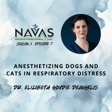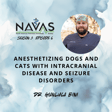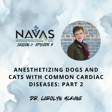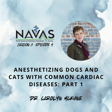
Debating Anesthesia Foibles and Faux-Paws with Dr. Tasha Bartel
In this special Thanksgiving episode of the North American Veterinary Anesthesia Society Podcast, we take a closer look at some long-standing traditions and practices in veterinary anesthesia. Joined by Dr. Tasha Bartel, veterinary anesthesiologist, chief medical officer at King Animal Hospital, and current NAVAS president, we explore myths, legends, and potentially outdated habits that have been passed down through generations. Together, we debate which of these “old recipes” still hold value and which might be ready for retirement. Grab your knife and fork as we dig into this thought-provoking discussion that challenges the status quo and encourages fresh perspectives in veterinary anesthesia.
If you like what you hear, we have a couple of favors to ask of you:
Become a member of NAVAS for access to more anesthesia and analgesia educational and RACE-approved CE content.
Spread the word. Share our podcast on your socials or a discussion forum. That would really help us achieve our mission: Reduce mortality and morbidity in veterinary patients undergoing sedation, anesthesia, and analgesia through high-quality, peer-reviewed education.
Thank you to our sponsor, Dechra - learn more about the pharmaceutical products Dechra has to offer veterinary professionals, such as Zenalpha.
If you have questions about this episode or want to suggest topics for future episodes, reach out to the producers at education@mynavas.org.
All opinions stated by the host and their guests are theirs alone and do not represent the thoughts or opinions of any corporation, university, or other business or governmental entity.










